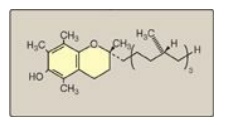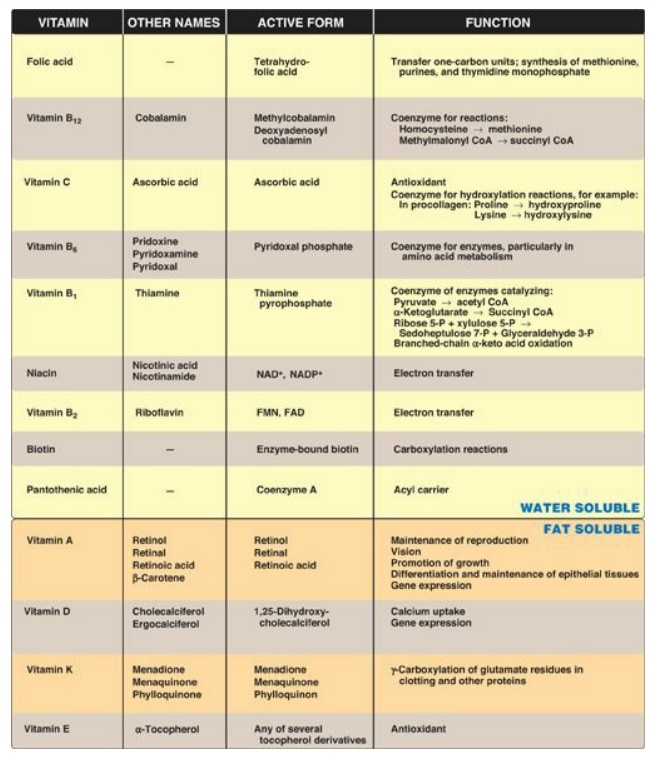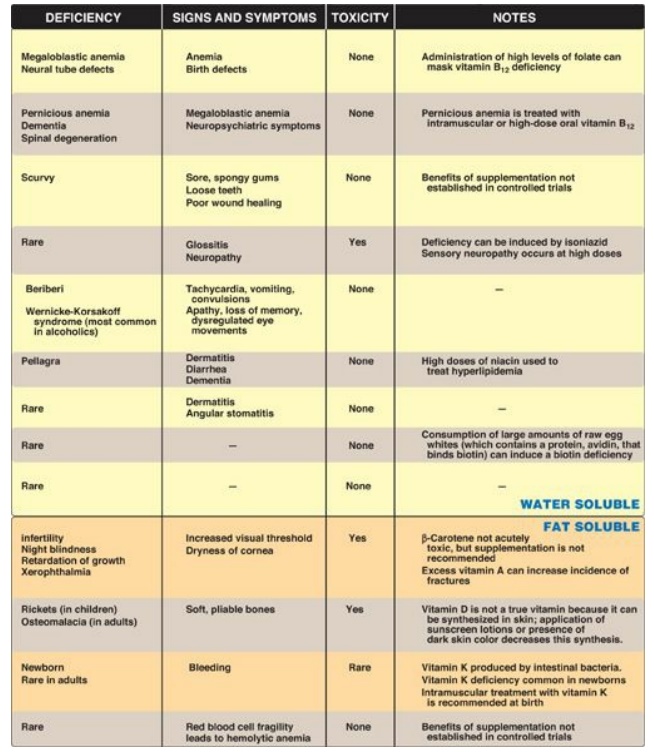Vitamin E
| Home | | Biochemistry |Chapter: Biochemistry : Vitamins
The E vitamins consist of eight naturally occurring tocopherols, of which α-tocopherol is the most active.
VITAMIN E
The E vitamins consist
of eight naturally occurring tocopherols, of which α-tocopherol is the most
active (Figure 28.28). The primary function of vitamin E is as an antioxidant
in prevention of the nonenzymic oxidation of cell components (for example,
peroxidation of polyunsaturated FAs by molecular oxygen and free radicals).

Figure 28.28 Structure of
vitamin E.
A. Distribution and requirements of vitamin E
Vegetable oils are rich
sources of vitamin E, whereas liver and eggs contain moderate amounts. The RDA
for α-tocopherol is 15 mg/day for adults. The vitamin E requirement increases
as the intake of polyunsaturated FA increases to limit FA peroxidation.
B. Deficiency of vitamin E
Newborns have low
reserves of vitamin E, but breast milk (and formulas) contain the vitamin.
Very-low-birth-weight infants may be given supplements to prevent the hemolysis
and retinopathy associated with deficiency of vitamin E. When observed in
adults, deficiency is usually associated with defective lipid absorption or
transport. [Note: Abetalipoproteinemia, caused by a defect in the formation of
chylomicrons (and VLDL), results in vitamin E deficiency.]
C. Clinical indications
Vitamin E is not
recommended for the prevention of chronic disease, such as coronary heart
disease or cancer. Clinical trials using vitamin E supplementation have been
uniformly disappointing. For example, subjects in the Alpha-Tocopherol,
Beta-Carotene Cancer Prevention Study trial who received high doses of vitamin
E not only lacked cardiovascular benefit but also had an increased incidence of
stroke.
D. Toxicity of vitamin E
Vitamin E is the least
toxic of the fat-soluble vitamins, and no toxicity has been observed at doses
of 300 mg/day (UL = 1,000 mg/day).
Populations consuming diets high in fruits and
vegetables show decreased incidence of some chronic diseases. However, clinical
trials have failed to show a definitive benefit from supplements of vitamins A,
C, or E; multivitamins with folic acid; or antioxidant combinations for the
prevention of cancer or cardiovascular disease.
The vitamins are
summarized in Figure 28.29.


Figure 28.29 Summary of
vitamins. P = phosphate; NAD(P) = nicotinamide adenine dinucleotide
(phosphate); FMN = flavin mononucleotide; FAD = flavin adenine dinucleotide;
CoA = coenzyme A. Summary of vitamins.
